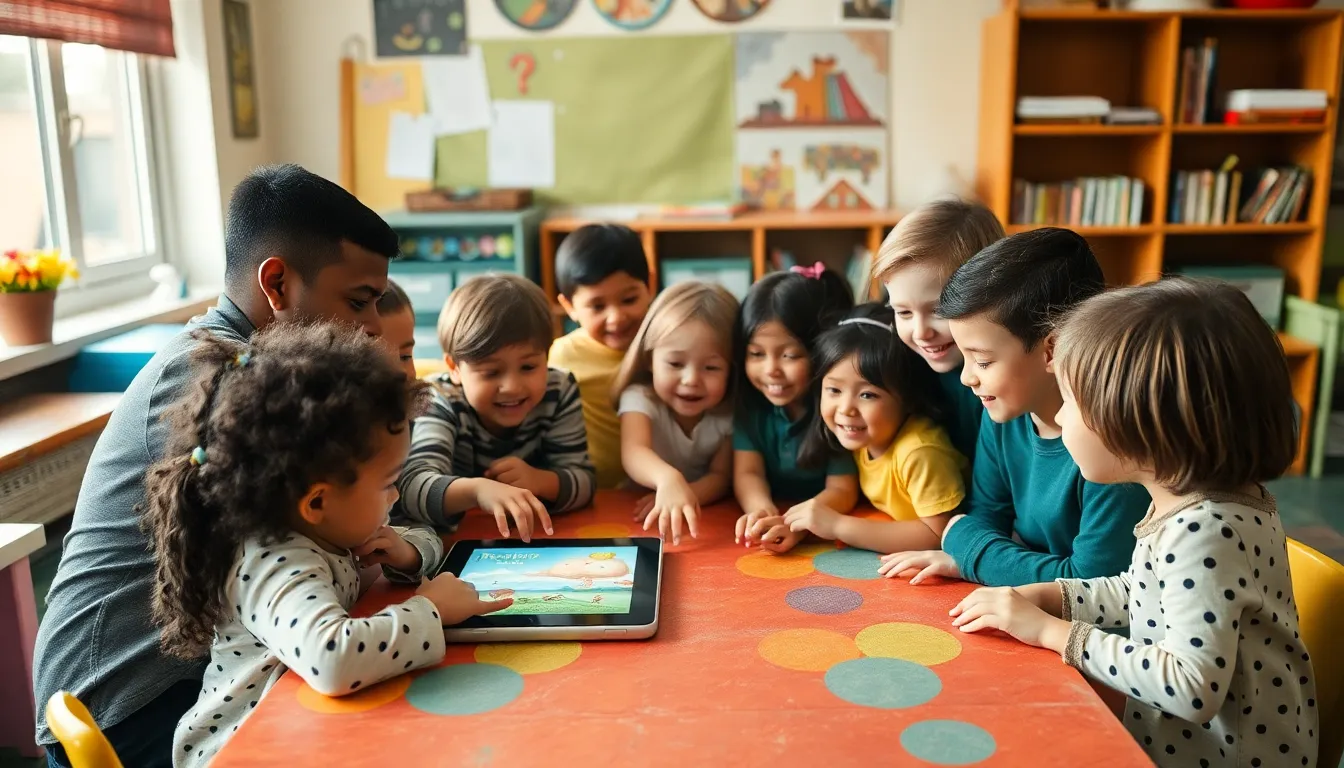Table of Contents
ToggleIn a world where screens dominate attention spans, interactive reading swoops in like a superhero, ready to save the day! Gone are the days of passive page-turning; now, readers can dive into stories where they control the action. Imagine flipping through a book that responds to your choices, making each reading session a unique adventure.
Overview of Interactive Reading
Interactive reading reshapes the traditional reading experience. Readers actively engage with narratives through choices that influence outcomes. This engagement transforms stories into personalized journeys.
Readers can make decisions at pivotal moments, creating unique paths for each narrative. Multiple endings based on choices encourage exploration and replayability. This approach captivates attention and enhances comprehension by making readers participants rather than spectators.
Technology plays a significant role in facilitating interactive reading. E-books and apps enable immersive components like audio, animations, and hyperlinks. Readers connect with texts in dynamic ways through these technological enhancements.
Interactive reading promotes critical thinking. As individuals navigate narratives, they analyze choices and their consequences. This process fosters deeper understanding and retention of themes and characters.
Educators utilize interactive reading methods to foster engagement in classrooms. By integrating activities like role-playing and group discussions, teachers encourage students to delve into texts. This inclusive strategy cultivates a love for reading, emphasizing collaboration and communication.
Interactive reading also appeals to diverse age groups, from children to adults. Children’s literature incorporates choices that encourage imagination. Adult titles, often in genres like mystery or romance, offer intricate decision-making that heightens suspense and investment in plots.
Overall, interactive reading enriches the reading landscape. Readers discover a more engaging, thoughtful, and enriched literature experience.
Benefits of Interactive Reading

Interactive reading offers numerous advantages that enhance the overall reading experience. Engaging actively with text transforms readers into participants, promoting deeper comprehension and retention of material.
Enhancing Comprehension
Interactive reading encourages critical analysis of narratives. Readers make choices that influence story outcomes, establishing connections between character motivations and plot developments. This method fosters deeper insight into thematic elements as readers navigate different paths. By exploring alternative endings, they reflect on events and characters, solidifying understanding through engagement. Educators have noted improved comprehension skills among students who utilize interactive texts, highlighting its effectiveness in academic settings.
Fostering Engagement
Active participation in the reading process significantly boosts engagement levels. Readers immersed in decision-making invest emotionally in the storyline, leading to increased motivation. Technology integrates multimedia elements like audio and visuals, enriching interactions and appealing to diverse learning styles. Encouragement of group discussions, role-playing, and collaborative activities promotes social connections among readers. Such dynamics increase enjoyment and build enthusiasm for literature across various age groups.
Techniques for Effective Interactive Reading
Interactive reading techniques elevate engagement and comprehension. Readers can utilize specific strategies to enhance their experience.
Questioning Strategies
Employing questioning strategies encourages deeper engagement with the text. Readers should ask open-ended questions about characters and plots to spark critical thinking. This technique promotes discussion about motivations and themes, enhancing understanding. For instance, questioning why a character makes a specific choice can lead to profound insights. Encouraging readers to articulate their thoughts helps them connect personally to the material. Additionally, reflective questions about the narrative’s direction can stimulate curiosity and exploration. Such strategies transform reading into an inquiry-driven process, making it dynamic and immersive.
Collaborative Discussions
Utilizing collaborative discussions fosters community involvement in reading. Group settings allow readers to share perspectives and interpretations. Each participant brings a unique viewpoint, enriching the overall experience. Engaging in conversations about choices made in interactive narratives promotes varied insights. Additionally, discussing differing outcomes highlights the complexity of storytelling. Students often express enthusiasm when they can voice their opinions in a supportive environment. By collaborating, readers build social connections and reinforce their understanding, ultimately enhancing their love for literature. This technique nurtures a sense of belonging and encourages ongoing exploration.
Tools and Resources for Interactive Reading
Interactive reading benefits from various tools and resources designed to enhance reader engagement. Software platforms act as vital resources, providing access to diverse interactive narratives. Popular e-book applications, such as Kindle and Apple Books, often feature elements that allow readers to make choices influencing storylines.
Reading apps like Wattpad and Choice of Games provide unique experiences. Users can select paths, creating personalized stories that adapt to their decisions. Those apps foster creativity and exploration, appealing to readers of all ages.
Audiobooks with immersive features also play a significant role. Some platforms offer narration synchronized with text and sound effects, boosting engagement and comprehension. Users can listen to characters’ dialogues, allowing them to connect more deeply with the narrative.
In educational settings, tools like Nearpod and Padlet enhance interactive reading experiences. Teachers utilize these platforms to create shared spaces for discussion, fostering collaboration. Students can engage in group projects that explore characters’ motivations, leading to richer analyses of the texts.
Graphic novels and interactive comics present another innovative format. With visually striking illustrations and dynamic storylines, these mediums captivate readers while encouraging critical thinking. They encourage readers to interpret visuals alongside text, enhancing overall engagement.
Among additional resources, online forums and book clubs support discussions surrounding interactive materials. Members exchange insights and recommendations, which cultivates a sense of community. These platforms allow readers to deepen their understanding and appreciation of stories through collaborative exploration.
Interactive reading reshapes how individuals connect with stories by transforming them into active participants. This approach not only enhances engagement but also fosters critical thinking and deeper comprehension. As readers navigate choices and explore various narrative paths they cultivate a personal relationship with literature that encourages ongoing curiosity.
The integration of technology further enriches this experience by providing immersive elements that cater to diverse learning preferences. With educators increasingly adopting interactive methods in classrooms the future of reading looks promising. This evolution invites readers of all ages to explore literature in dynamic and meaningful ways, ensuring that the joy of reading continues to thrive.







